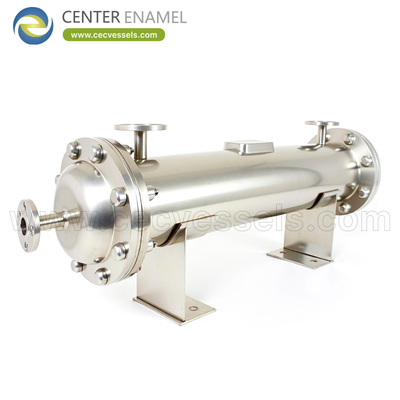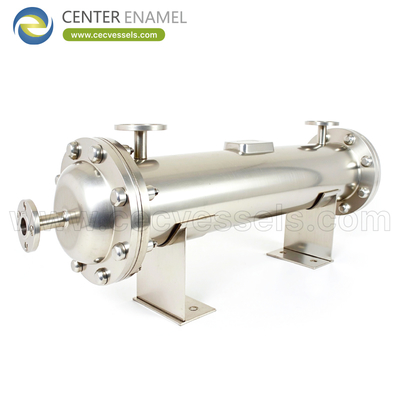-
Glass Fused To Steel Tanks (419)
-
Stainless Steel Tanks (372)
-
Fusion Bonded Epoxy Tanks (424)
-
Galvanized Steel Tanks (321)
-
Aluminum Dome Roofs (753)
-
Wastewater Storage Tanks (226)
-
Welded Steel Tanks (297)
-
Pressure Vessels (295)
-
Anaerobic Digester (201)
-
Industrial Water Tanks (349)
-
Glass Lined Steel Tanks (180)
-
Bolted Steel Tanks (181)
-
Sludge Storage Tank (115)
-
Biogas Storage Tank (173)
-
Leachate Storage Tanks (133)
-
Agricultural Water Storage Tanks (179)
-
Fire Water Tank (166)
-
Grain Storage Silos (130)
-
Biogas Projects (349)
-
Wastewater Treatment Projects (270)
-
Double Membrane Roof (177)
The Silent Revolution in Cooling: A Deep Dive into Thermoelectric Technology
| Place of Origin: | China |
| Brand Name: | Center Enamel |
| Certification: | ISO 9001,CE, NSF/ANSI 61, WRAS, ISO 28765, LFGB, BSCI, ISO 45001 |
| Minimum Order Quantity: | 1 Sets |
| Price: | 2000 |
| Delivery Time: | 2 months |
| Payment Terms: | L/C, T/T |
| Supply Ability: | 200 sets / days |
|
Detail Information |
|||
Product Description
The Silent Revolution in Cooling: A Deep Dive into Thermoelectric Technology
In a world increasingly reliant on technology, from the micro-scale of semiconductors to the macro-scale of entire industries, the demand for precise, reliable, and efficient thermal management has never been more critical. While traditional refrigeration systems have long dominated the cooling landscape, a quiet revolution has been unfolding—powered by the very principles of solid-state physics. This is the world of Thermoelectric Coolers (TECs), a technology that harnesses the power of electricity to move heat without a single moving part, a drop of refrigerant, or a whisper of noise.
The essence of thermoelectric cooling lies in a phenomenon known as the Peltier effect, a discovery made in 1834 by French physicist Jean Charles Athanase Peltier. While the concept may sound complex, its operation is elegantly simple. A thermoelectric module, the heart of a TEC, is composed of an array of tiny semiconductor "couples," typically made of bismuth telluride, arranged between two ceramic plates. When a DC electrical current is applied, these semiconductors act as a solid-state heat pump. Electrons and "holes" (the absence of electrons) within the materials absorb heat on one side and release it on the other, creating a temperature differential. One side becomes cold as heat is absorbed, while the other side becomes hot as that heat is dissipated..
As a Global Leading Pressure Vessels Manufacturer, Shijiazhuang Zhengzhong Technology Co., Ltd(Center Enamel ) Powering Global Industries with Unrivaled Pressure Vessel Solutions, Your Trusted Global Partner for Mission-Critical Pressure Vessels. Center Enamel stands at the forefront of pressure vessel innovation and manufacturing, delivering pressure vessel solution to industries worldwide. With a legacy of excellence, Center Enamel has consistently set industry benchmarks, providing cutting-edge pressure vessel solutions for the most demanding applications globally.
| Products | Pressure Vessel |
| Atmospheric Pressure Vessels | Horizontal Containers, Vertical Cylindrical Containers, Vertical Cylindrical Storage Tanks |
| Separator Pressure Vessels | Gravity Separator, Cyclone Separator, Coalescing Separator, Centrifugal Separator, Steam-water Separator, Bearing Separator, Mechanical Filter, Ion exchange Filter, Air Filter, Fuel Filter, Adsorption Filter, BioFilter, Oil Filter, Hydraulic oil Filter, Separator |
| Heat Exchangers | Shell and Tube Heat Exchangers, Plate Heat Exchangers, Spiral Heat Exchangers , Air Coolers, Liquid Coolers, Thermoelectric Coolers, Chill Water Main Unit, Evaporative Condensers, Air cooled Condensers, Electronic Gas Condensers |
| Reactor Pressure Vessels | Stirred Tank Reactors, Continuous Stirred-tank Reactors, Tubular Reactors, Tower Reactors, Fixed Bed Reactors, Fluidized Bed Reactors, Bioreactors |
This fundamental principle allows for a level of temperature control and design flexibility that is simply unattainable with conventional cooling methods. The ability to precisely manage heat flow by simply adjusting the electrical current makes TECs ideal for applications where fractions of a degree matter. This isn't just about cooling; it's about a silent, precise, and highly responsive approach to thermal management.
A Historical Perspective: From Scientific Curiosity to Modern Marvel
The story of thermoelectricity is a testament to the long and winding road of scientific discovery. It began in 1821 with Thomas Johann Seebeck, who discovered that a temperature difference could create an electrical voltage—the Seebeck effect, which is the basis for thermocouples. Over a decade later, Peltier discovered the inverse: that an electric current could create a temperature difference. The final piece of the puzzle came with Lord Kelvin's work in the mid-19th century, which unified these effects and predicted the third, the Thomson effect, paving the way for a deeper understanding of the physics at play.
For over a century, these phenomena remained largely in the domain of academic curiosity. It wasn't until the mid-20th century, with the advent of semiconductor technology, that scientists like Abram Ioffe in the Soviet Union began to unlock their practical potential. Ioffe's research into semiconductor materials like bismuth telluride, which are highly efficient at moving heat, laid the groundwork for the modern thermoelectric cooler. The shift from dissimilar metals to these specialized semiconductor alloys was the key turning point, transforming a theoretical concept into a commercially viable technology. Today, that legacy of innovation continues, with researchers constantly seeking new materials and designs to improve efficiency and performance.
The Unrivaled Advantages of Thermoelectric Cooling
The absence of moving parts is perhaps the most significant advantage of TECs. Unlike traditional vapor-compression systems that rely on compressors, pumps, and fans, thermoelectric coolers are solid-state devices. This inherent simplicity translates into a host of benefits that make them the perfect solution for a wide range of applications.
Exceptional Reliability and Longevity: With no moving parts to wear out, TECs have an exceptionally long operational lifespan. They are resistant to vibration and can operate in any orientation, making them highly durable and reliable in demanding environments, from deep space probes to military equipment.
Compact and Versatile Design: Thermoelectric modules are remarkably small and thin, allowing them to be integrated into devices where space is at a premium. This has led to their widespread use in miniaturized electronics and portable equipment. Their flexible form factor allows for direct-to-component cooling, delivering a concentrated cooling effect right where it's needed.
Precise Temperature Control: The ability to instantly reverse the flow of heat by simply reversing the polarity of the electrical current is a game-changer. This allows for both heating and cooling from a single module and provides a level of temperature control that can be accurate to within a fraction of a degree Celsius. This precision is invaluable in scientific and medical applications.
Environmental Friendliness: TECs operate without the need for harmful refrigerants like CFCs or HFCs, which have been linked to ozone depletion and climate change. As the global push for sustainability intensifies, this eco-friendly aspect positions thermoelectric technology as a key component of a greener future.
Silent Operation: The lack of a compressor or fan motor means TECs operate with virtually no noise or vibration. This makes them ideal for noise-sensitive environments, such as medical laboratories, bedrooms, or in-cabin automotive applications.
Applications: Where TECs Are Making a Difference
The unique characteristics of thermoelectric coolers have made them indispensable across a diverse spectrum of industries, solving complex thermal challenges with elegant simplicity.
Consumer Electronics: From cooling CPUs and GPUs in high-performance computing to managing the temperature of sensitive cameras and sensors in smartphones and laptops, TECs are a go-to solution for enhancing performance and preventing overheating. They are also widely used in mini-fridges and portable beverage coolers for their compact size and silent operation.
Medical and Scientific Equipment: The demand for precise temperature control in the medical field is absolute. TECs are integrated into devices like DNA thermal cyclers (PCR machines), blood analyzers, and medical storage units to ensure the integrity of samples and the accuracy of test results. In laboratory settings, they are used to stabilize the temperature of lasers, spectrometers, and other sensitive instruments.
Automotive Industry: As electric vehicles (EVs) become more prevalent, the need for efficient battery thermal management is paramount. TECs are being explored for this purpose, as well as for climate-controlled seating and thermoelectric cup holders that can keep beverages hot or cold.
Aerospace and Defense: In the extreme conditions of space or military operations, reliability and durability are non-negotiable. TECs are used in infrared sensors, night vision equipment, and satellite components to ensure optimal performance in environments where traditional cooling systems would be impractical.
Industrial and Telecommunications: Maintaining stable temperatures is crucial for the reliability of telecommunications equipment and industrial processes. TECs are used to cool laser diodes in fiber optic networks and to regulate the temperature of sensitive components in manufacturing machinery.
The Future of Thermoelectric Cooling
The global market for thermoelectric coolers is on a steady growth trajectory, with market projections showing continued expansion. This growth is fueled by ongoing advancements in material science and manufacturing processes, which are driving improvements in efficiency and performance. Researchers are developing new semiconductor alloys and thin-film technologies to increase the figure of merit, a measure of a material's thermoelectric efficiency. The integration of TECs with advanced digital controls and IoT platforms is also creating "smart" thermal management systems that can adapt in real-time to changing conditions.
As industries continue to miniaturize and demand greater efficiency, the role of thermoelectric cooling will only become more significant. From personal wearable cooling devices to next-generation data centers, TECs are poised to be a central part of the solution. They represent a fundamental shift in how we approach thermal management—a shift away from bulky, noisy, and refrigerant-dependent systems, and towards a future that is solid-state, silent, and sustainable. The revolution is already here, and it's cooling the world, one electron at a time.




